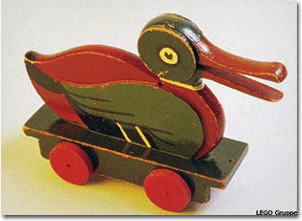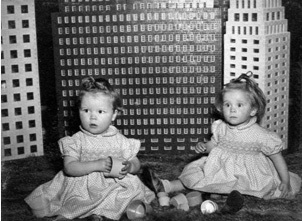STAIRS
Gee Willikers,You can reach any floor from here...

LEGO building blocks are one of the best known toy lines in the world, and for good reason. There's something for everyone -- kids who are into building stuff can create their own elaborate play sets, and kids who are into breaking stuff down can do so without rendering their toys unusable.
It's such a simple yet genius idea, you can't help but wonder how the guys who started the company came up with it -- or rather, how they came up with it before anyone else.

Those are not LEGO blocks: Those are Kiddicraft's "self-locking building bricks," created 10 years before LEGO "invented" the same thing. This is what LEGO was doing at the time:

In 1939, child psychologist, author and pioneer toymaker Hilary Fisher Page developed a visionary new toy: hollow, plastic building blocks with four or eight studs that enabled children to build stuff with them, from little toy houses to huge plastic skyscrapers. Page himself built these structures for Kiddicraft's stand at the 1947 Earls Court Toy Fair. You know those impressive LEGO displays of entire cities they have in their parks and stores? Kiddicraft was doing that before LEGO bricks even existed. Here's a picture of some Kiddicraft buildings:


In the same year, LEGO's founder Ole Kirk Christiansen bought a plastic injection machine from a salesman who demonstrated the type of toys that could be produced with it by showing him some Kiddicraft play sets. This was only meant to be an example of the machine's capabilities, but Christiansen had a better idea: doing the exact same thing and calling it by another name.
The rest, of course, is history. LEGO went on to become a household name to such an extent that it is now impossible to go to the bathroom in the middle of the night without stepping on at least one of their products on the way (even if there are no children in your house). Page, in turn, ended up committing suicide in 1957 as his company went down the toilet. LEGO respected his death by gleefully buying the rights to the rest of his ideas in the '80s, then doing nothing with them.
Kiddicraft on the left, LEGO on the right.
